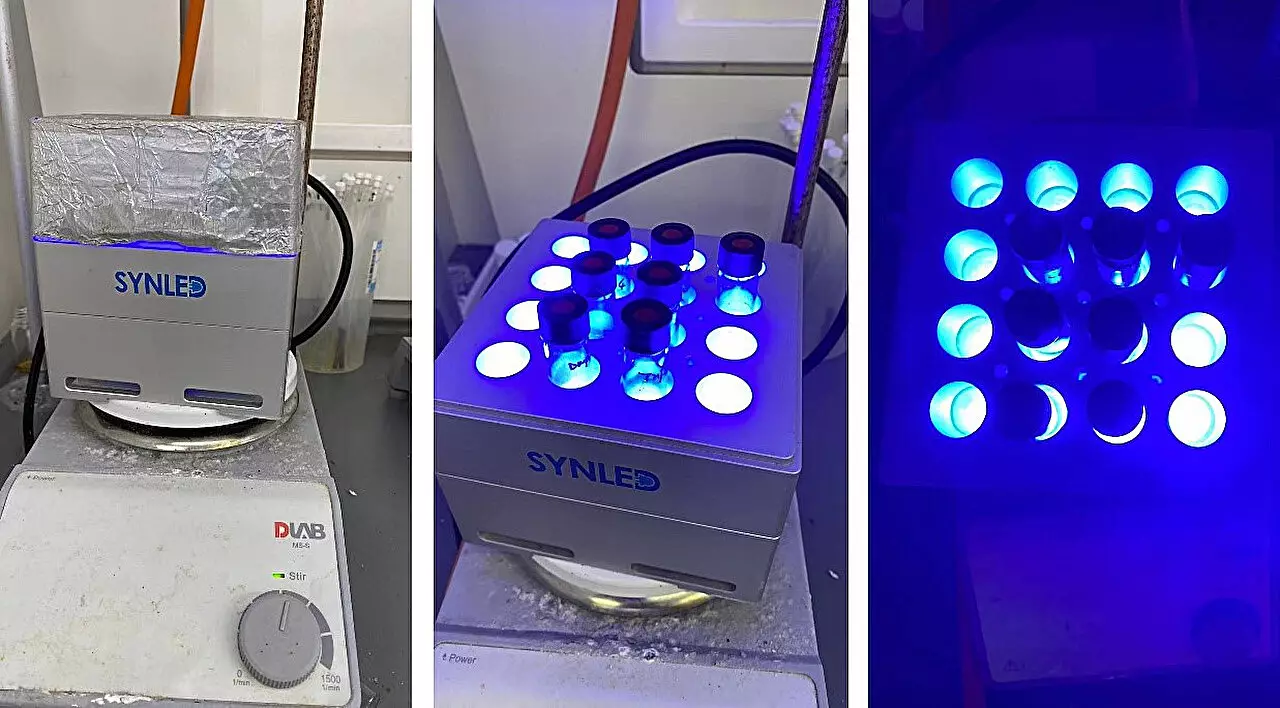In the intricate world of biochemistry, the modification of carbohydrates—specifically through glycosylation—has always stood out as an essential process. Researchers at the National University of Singapore (NUS) have made substantial strides in this area, offering a transformative solution that bypasses traditional complexities in synthesizing glycosides and glycoproteins. Their groundbreaking approach, which relies on a biomimetic framework, narrows down the lengthy, inefficient protocols required for carbohydrate synthesis, ultimately bridging critical gaps in pharmaceutical, cosmetic, and biotechnological disciplines.
Associate Professor Koh Ming Joo and his collaborators from the Rosalind Franklin Institute and the University of Oxford, have turned their focus to not just improving efficiency but reshaping the way researchers approach glycosylation at its core. Their work, published in *Nature*, exemplifies the trajectory towards more sustainable and effective scientific practices.
The Challenge of Conventional Methods
Historically, the synthesis of C-glycosyl compounds has been a vexing endeavor, heavily reliant on multi-step reactions often encumbered by the need for protecting-group strategies. These methods not only complicate the synthesis process but also lead to excessive waste, invoking concerns about sustainability in chemical research. In a field where native sugars contain multiple hydroxyl groups of similar reactivity, it has been a challenge to selectively modify them without employing cumbersome protective measures. This limitation has dampened the prospects of fully harnessing the medicinal and functional potential of carbohydrate derivatives.
Koh pointedly addresses these hurdles, emphasizing the collective efforts of research teams striving for a straightforward approach that eliminates the need for protecting groups. The disproportionately high workload and environmental toll of traditional glycosylation methods create an urgent need for innovation—a need now answered through biomimetic practices.
Emulating Nature’s Processes
The ingenuity of the NUS research team lies in their mimicking of natural biological processes, particularly the actions of glycosyltransferases. These enzymes effectively conduct site-selective glycosylations without compromising other hydroxyl groups. The newly developed “cap and glycosylate” technique embodies this natural efficiency, selectively activating the anomeric hydroxyl group in a native sugar to create a stable thioglycoside intermediate.
Under controlled photochemical conditions, this intermediate converts to various glycosides through a stereocontrolled process, thus achieving a clean solution in a single reaction. This stands in stark contrast to the multi-step procedures defined by protecting-group chemistry, offering researchers a streamlined method for synthesizing a broad array of glycosylated compounds.
Applications Beyond Small Molecules
What sets this research apart is not its innovative approach alone but the broad applicability of the “cap and glycosylate” strategy. The method doesn’t only serve small molecules; it extends to complex biomolecules, demonstrating versatility across extensive chemical landscapes. The team successfully tackled the challenge of post-translational chemical glycosylation of proteins, a field that had seen minimal exploration due to previous methodological constraints.
Through their work, they achieved C-glycosylation of various proteins with differing structures, showcasing that their strategy is adaptable and robust. This proficiency opens the door for new avenues in the design and development of drug therapies, potentially introducing novel sugar-based options into clinical settings.
Beyond Efficiency—Towards Sustainable Research
One must acknowledge the essential need for sustainable practices in scientific research, now more than ever. The approach taken by Koh and Davis emphasizes not only speed and efficiency but also the preservation of resources—a critical consideration as the scientific community grapples with existential challenges such as climate change and resource scarcity. By eliminating the extensive waste typically associated with protecting-group approaches, this new method moves us closer to a sustainable model of scientific inquiry.
Prof. Benjamin G. Davis further elaborates on the beauty of their innovation, describing how the use of carbon-centered radicals allows for the introduction of functional information into biological materials seamlessly. This perspective echoes the larger trend within modern science to pursuit sustainable practices that can nurture both innovation and ecology.
In essence, the advances made by the NUS team mark a significant turning point in carbohydrate chemistry. Their work stands as a testament to the powerful potential held within the convergence of biomimetic principles and modern synthetic techniques. As they lead us into a new frontier in glycosylation, the scientific community can anticipate a wave of novel therapeutic options and effective treatments influenced by their findings, all made possible through a decisive shift toward efficiency and sustainability.


Leave a Reply